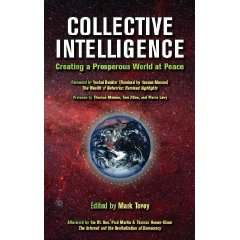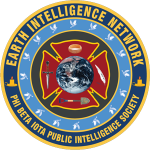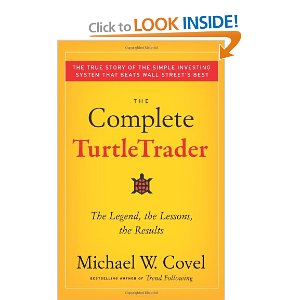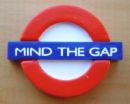
“Creating a Smart Nation,” pp. 107-130

 Outstanding Overview for CEOs and MBAs going into HR, August 1, 2008
Outstanding Overview for CEOs and MBAs going into HR, August 1, 2008
Robert L. Cross
Ben Gilad, one of the top five business intelligence gurus that I know, teaches us that CEO information is invariably filtered, late, incomplete, and/or subjective, lacking in analytic rigor (and in my own experience, based on the easy 2% of the information the subordinates can access easily). CEOs have to not only create their own internal “organizational intelligence” unit, they have to read for themselves–reading and thinking cannot be delegated.
This is a great book, an essential reference for CEOs who are willing to open their minds and consider the possibility that the Weberian model of bureaucracy as knowledge-hoarding and information pigeon-holing is pathologically out of touch with the the diversity and pace of the modern world.
I do not agree with those that dismiss this book as being for consultants. It is an easy to read, well-organized, and ably-ducumented offering (including appendices with specific questions for exploration, and before and after charts).
I am loading a chart above of the four quadrants of knowledge, information, and intelligence that I have been exploring since the 1990's.
1. Most organizations are barely familiar with Quadrant I (Knowledge Management or data mining or making the most of what we already know.
2. A few are in Phase I of Quadrant II, on levering social networks both internally and externally–the Business Week cover story of 20 June 2005 on “The Power of Us” is a superb starting point for that one.
3. A handful of us have been focusing on Quadrant III since the 1990's, and Peter Drucker, writing in Forbes ASAP on 28 August 1998 said it best: “We have spent 50 years focusing on the T in IT, we should spend the next 50 years focusing on the I in IT.”
4. Finally, also the seminal work was written in 1967 (Organizational Intelligence (Knowledge and Policy in Government and Industry), most organizations, and the US Government and United Nations in particular, are deaf, dumb, and blind in Quadrant IV, Organizational Intelligence.
I like this book. It is not a cookie-cutter book, it is a serious stepping stone for anyone wanting to think about the move away from pyramidal organizations and toward ever-expanding circular organizations.
Other books in this vein recommended for CEOs (see also my Leadership list):
The Battle for the Soul of Capitalism
Natural Capitalism: Creating the Next Industrial Revolution
The Knowledge Executive
The exemplar: The exemplary performer in the age of productivity
Early Warning: Using Competitive Intelligence to Anticipate Market Shifts, Control Risk, and Create Powerful Strategies
Fog Facts: Searching for Truth in the Land of Spin
The Wealth of Networks: How Social Production Transforms Markets and Freedom
Society's Breakthrough!: Releasing Essential Wisdom and Virtue in All the People
Building a Knowledge-Driven Organization
I also recommend the six books I have published, espeically the ones on public intelligence and collective intelligence and on information operations, and books on the general topic of group gtenius, wisdom of the crowds, smart mobs, and so on.

Seminal Work for Commercial Intelligence, May 8, 2008
Benjamin Gilad
This is one of a tiny handful of truly useful, insightful, and applicable books in commercial intelligence.
Page 1 has the following line that I continue to cite:
“Top manager's information is invariably either biased, subjective, filtered, or late.”
True then, true today, and also applicable in government and in the non-profit world.
The other vitally important quote:
“Using intelligence correctly requires a fundamental change in the way top executives make decisions.”
Ben Gilad, Babette Bensoussan, Jan Herring, Leonard Fuld, Mats Bjore, Arno Reuser, and Steve Edwards are the only minds that I consider to be at the pinnacle of the profession. No doubt there are others, but these are the ones that in all of my reading, have never, ever, been displaced from the top rank once I understood their work.
Buy this book used, it is a CLASSIC of enduring value. Buy anything published by this brilliant practitioner.


Michael Covel
5.0 out of 5 stars Was Going to Ignore, Then Could Not Put It Down
December 17, 2007
This book arrived in the mail with no letter. I normally do not read or review unsolicited books, but as I was deep into The Battle for the Soul of Capitalism instead of ignoring it I picked it up and it grabbed me.
This is a fine book, a tale well told with deep detail where there needs to be detail. My only thought as I put it down was, Wow! followed by another thought: what would it take to make Wall Street traders a force for good as John Bogle calls for in his own book?
If you want to be a trader in today's market where you buy on dips and sell on spikes, this book is as good as any.
Here are some others that in my view portend a bright future for moral capitalism and communal ownership:
The Politics of Fortune: A New Agenda For Business Leaders
The Fortune at the Bottom of the Pyramid: Eradicating Poverty Through Profits (Wharton School Publishing Paperbacks)
The Wealth of Networks: How Social Production Transforms Markets and Freedom
Revolutionary Wealth: How it will be created and how it will change our lives
Infinite Wealth: A New World of Collaboration and Abundance in the Knowledge Era
The Tao of Democracy: Using Co-Intelligence to Create a World That Works for All

Strategic OSINT (Chapter 6 in Strataegic Intelligence Vol 2) 10 MB
Full Text Online for Google Translate: 2008 Open Source Intelligence (Strategic)
Introduction
OSINT and Intelligence Reform
– History
– Requirements
– Collection
– Processing
– Analysis
– Covert Action
– Counterintelligence
– Accountability, Civil Liberties, and Oversight
– Strategic Warning
– Strategic Sharing
– Emerging Prospects
— Digitization
— Visualization
— Peer-to-Peer (P2P)
OSINT and Electoral Reform
OSINT and Governance Reform
OSINT and Strategic Budgetary Reform
Notes 1-44
Volume II, Chapter 6, pp. 95-122. Edited by Professor Dr. Loch Johnson, the dean of the intelligence practitioner-scholars, this set, while expensive, is the best available total overview of the craft of intelligence.
BitChute Link for Description, Embed Code, Full-Screen Viewing, & Sharing
SHORT URL This Post: https://tinyurl.com/2007-Steele-Amazon
From 28:00 in the above movie, Q&A, is UNIQUE, not in below material.
Briefing Slides and Script Below the Fold
 First Rate Primer for New World of Open Policy-Intel Deliberations,
First Rate Primer for New World of Open Policy-Intel Deliberations,
Thomas Quiggin
The publisher, who has an office in the US, has very foolishly listed this book as being available only from Singapore, so a $25 book at this time is only available for $60 from the one person willing to claim they can ship it who will in fact buy it only when they are paid double for it. I have encouraged the author to prevail on the publisher to distribute the book from their office in New Jersey, so that well-intentioned Americans who wish to heal their Republic may acquire this excellent work directly from Amazon.
It was my good fortune to receive a copy of the book in galley form, and below I offer the same remarks that appear on the back of the book. The book describes Singapore's success with the Risk Assessment and Horizon Scanning (RAHS) program. I heard this program briefed in Canada by a Singapore Police Deputy Commissioner, and was enormously impressed. Singapore is doing everything right: emphasis on open sources of information, emphasis on open and inclusive analysis, emphasis on tools for processing instead of wasting billions on secretly collecting the 5% that is relevant, and so on. Here is what I was pleased to provide for the back jacket:
“This is one of the most original, broad-ranging, and indeed exciting books to emerge in the new era that juxtaposes asymmetric and non-traditional threats with distributed and innovative combinations of open sources and methods. Tom Quiggin fully understands that in the age of distributed infromation the concept of ‘central intelligence' is not only obsolete, but that effective intelligence cannot be achieved without the full cooperation of all organizations–governmental as well as non-governmental.
“This work is in my view the first major work in the new generation of intelligence and national security studies and will inform those who have to make the decisions and carry out the work, not only in government, but in the private and non-profit sectors where much of the innovation is occurring.
“With the author being most persuasive to the effect that ‘connecting the dots' for discrete event predictions is not within the capacity of the existing (secret) strategic intelligence community, anticipatory warning systems such as horizon scanning must not only be implemented for all forms of threat including communicable diseases, but they must be created with the full participations of all elements of society.”
The jacket identifies me as CEO of OSS.Net, Inc. but does not mention that I was the senior civilian responsible for creating the Marine Corps Intelligence Command in 1988, and served six tours in the clandestine service of the Central Intelligence Agency, including three overseas tours under cover, and three tours dealing with counterintelligence, advanced information processing, and future imagery and signals collection systems. I mention this because in my view the secret intelligence community as it now exists must be destroyed. We must start over working from outside in and rightside up. Instead of spending 99% of the funds on the 5% we can steal (but not process), we need to take the US intelligence budget of $60 billion a year, and break it into three parts:
1) Free online education in all languages available by the call to the five billion poor, who receive free cell phones as part of the deal.
2) Earth Intelligence Network done right (I have created the non-profit version of this together with Jim Turner's Transpartisan Policy Institute, as a stop gap pending a moral intelligent transpartisan Congress and Executive team being elected in the USA).
3) A mix of cladestine and technical secret intelligence collection, most done in collaboration with host governments and focused strictly on transnational crime including multinational corporate corruption, theft, and money launders, and on terrorism, with half the money spent on properly integrating all known information both open and secret.
The Game is ON. For those who wish to prosper in the newly-appreciated national security environment that this book by Thomas Quiggin addresses, I also recommend the books on Ecological Economics, Natural Capitalism, and Capitalism 3.0. If we all commit to informed democracy and moral capitalism, the future will be bright for all of us, including the five billion poor at the bottom of the pyramid, whom we must empower so that they can create wealth as C. K. Prahalad suggests in “The Fortune at the Bottom of the Pyramid.”
Natural Capitalism: Creating the Next Industrial Revolution
Capitalism 3.0: A Guide to Reclaiming the Commons (BK Currents)
Ecological Economics: Principles And Applications
The Fortune at the Bottom of the Pyramid
 Click Here to Vote on Review at Amazon,
Click Here to Vote on Review at Amazon,
on Cover Above to Buy or Read Other Reviews,
I Respond to Comments Here or There